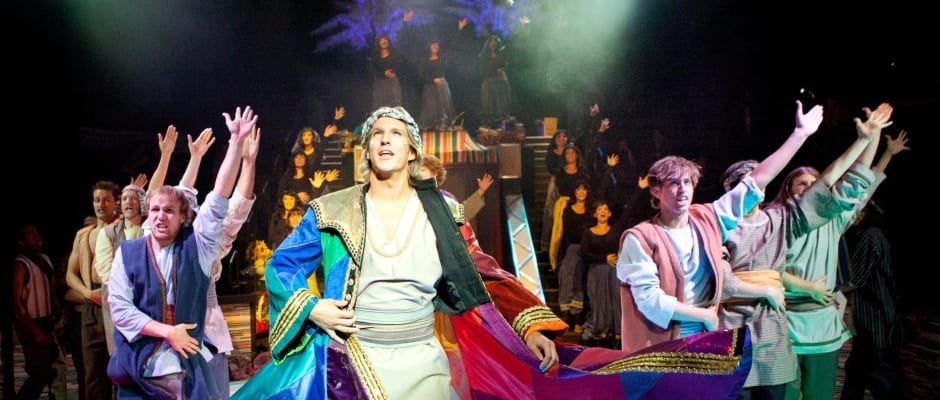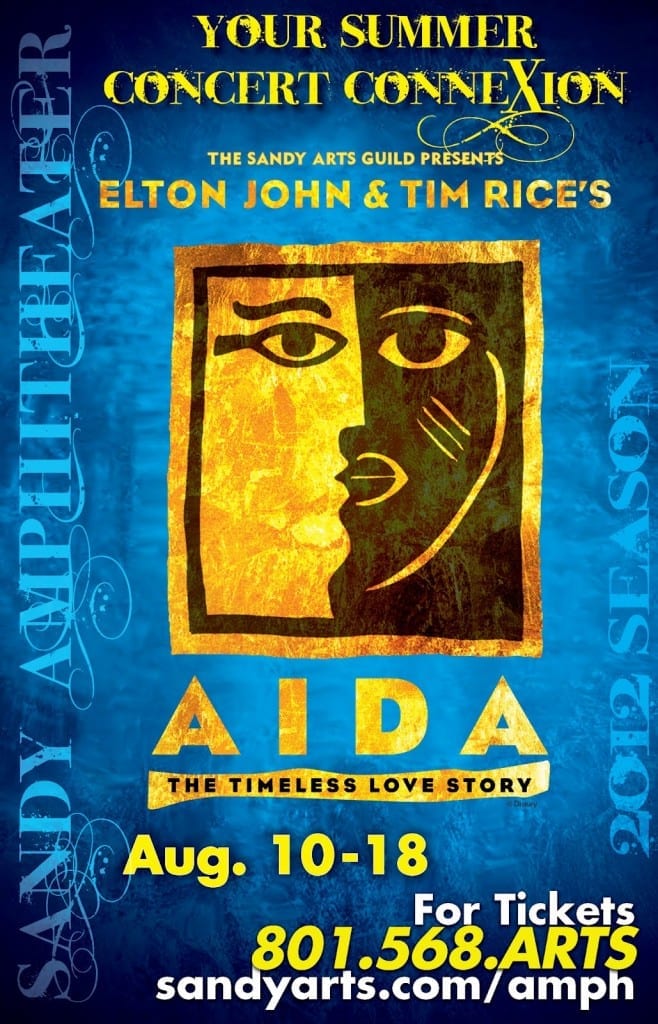IVINS — I’m not a big fan of Joseph and the Amazing Technicolor Dreamcoat. While Andrew Lloyd Webber‘s music is catchy and very singable, the show is often kitschy and overdone. Every arts council up and down the Wasatch Front and beyond seems to keep the ubiquitous “family show” in heavy rotation, and likewise every director feels the need to put their own (often incoherent) spin on it. But as long as audiences keep going to see it in droves, theatre groups will continue to produce the show that seems almost tailor made for Utah audiences. Therefore, it was with some minor eye-rolling and inward groaning that I accepted the assignment to review this chestnut down at the Tuacahn Amphitheatre. And I am happy (and not a little bit surprised) to report that this production of Joseph succeeds on every level. The singing was superb, the choreography was fresh and innovative, and the staging was inventive and mostly very successful in creating an enjoyable and clever show.
Director and choreographer Derryl Yeager worked hard to bring this production up to date, incorporating a nod or two to pop-culture in almost every scene. There are references to Duck Dynasty, the Geico camel, the recent Twinkie shortage, as well as horses, cars, wagons, buses and chariots, and even the entire cast of Laugh-In. Those trailblazers of comedy (including Gilda Radner, Lily Tomlin, and Goldie Hawn) arrived on a school bus in homage to that television show that usurped the traditional Act One finale of “Go, Go, Go Joseph!” (While that whole episode went over the heads of the younger contingency in the audience, the near me seniors loved every minute of it.) Yeager and his cast and staff certainly worked very hard to give this production a new twist. The choreography was exciting to watch and complex enough to keep interest. In fact, sometimes I found myself watching the backup dancers more than the singer out front, despite the high caliber of vocalists in the cast. However, the seduction dance between Mrs. Potiphor (Daysha Pedersen) and Joseph was my least favorite, as it seemed awkward and contrived.
James Royce Edwards as Joseph brought his well-honed musical chops and well-toned muscles to the stage for his fourth season at Tuacahn. His vocals were lovely, even if he sometimes lacked a connection at times to the others onstage. But he’s certainly got the physique to wear a loin cloth onstage for most of the show. Lisa Hopkins Seegmiller as the Narrator commanded the stage with strong presence and considerable humor. She wove her way in and out of the scenes almost seamlessly. She is a highly skilled musician as well, and I was impressed with her ability to pull her note out of thin air, it seemed, when the accompaniment was thin or difficult to hear. Another performance worthy of comment was Trevor Dion Nicholas’s turn as Judah singing “Benjamin Calypso.” He was funny when encouraging his stage brothers to sing along, and also touching when begging for Benjamin’s life; it was a stand out moment, although it felt a little rushed.
The music direction by Melissa Yanchak was uniformly outstanding, with high points which included the chorus of “Canaan Days” and “Close Every Door.” Some musical numbers have been given new arrangements, with extended dance sections that are typically not in the traditional score, as well as some variations to usual accompaniments. These departures from the expected score helped to keep the show fresh and relevant. The hidden orchestra under the direction of Yanchak was well-rehearsed and professional sounding, but needed a little more finesse with the sound mixing, as they drowned out the singers at times.
Joseph is a show that is noteworthy for its abysmal lack of main female characters, and this production was no exception. But the caliber of ensemble dancers was outstanding, and the excellence of the chorus raised the entire level of the production as well. The female dancers/wives were enthusiastic, and their showmanship was remarkable, even when they didn’t have much to do.
With all this praise it’s easy to overlook the design team, but that would be a terrible oversight. The costume design by Janet Swenson was beautiful, expensive looking, and elaborate. Swenson chose a different decade for each section of the show. For example, Potiphar and company were represented as 1920’s gangsters, Pharaoh was of course an Egyptian incarnation of 1950’s Elvis, and “Go Go Joseph” featured, well, go-go dancers. The costumes were sophisticated and fitting. The scenic design by Brad Shelton and the projection design by Jonathan Infante almost stole the show. The stage was almost bare throughout the performance, with the exception of an enormous pyramid placed at center stage. The pyramid is deceptively simple, however, as the set and lighting and projection designers worked seamlessly together to create many locations. The sides of the pyramid were sometimes used as projection screens to give more detail to Joseph’s dreams, or to share a humorous moment in “One More Angel.” The walls opened up to become the jail where Joseph is thrown. The upper levels supported various performers; brothers, slaves, dancers, workers all helped to define scenic moments, the King appeared through a door at the top and slid down a wire to the stage, and so on. It was a seemingly simple theatrical device that was used to great effect and an element that my theatre companion and I talked about at length in our post-production discussion.
Overall Tuacahn’s production of Joseph was refreshing and unexpected, in a good way. There were one or two moments when all the tweaking and clever winks felt a little overdone, (at one point I wrote “overcompensating” in my notes), but my overarching impression is that this is a show well worth seeing. It will please its audiences no end and should provide a huge boost to Tuacahn’s box office this year. Families will love it; there is nothing to offend anyone from small children to grandparents, and many people will leave the theater with a smile, singing Tim Rice‘s lyrics to the well-known songs all the way home.






